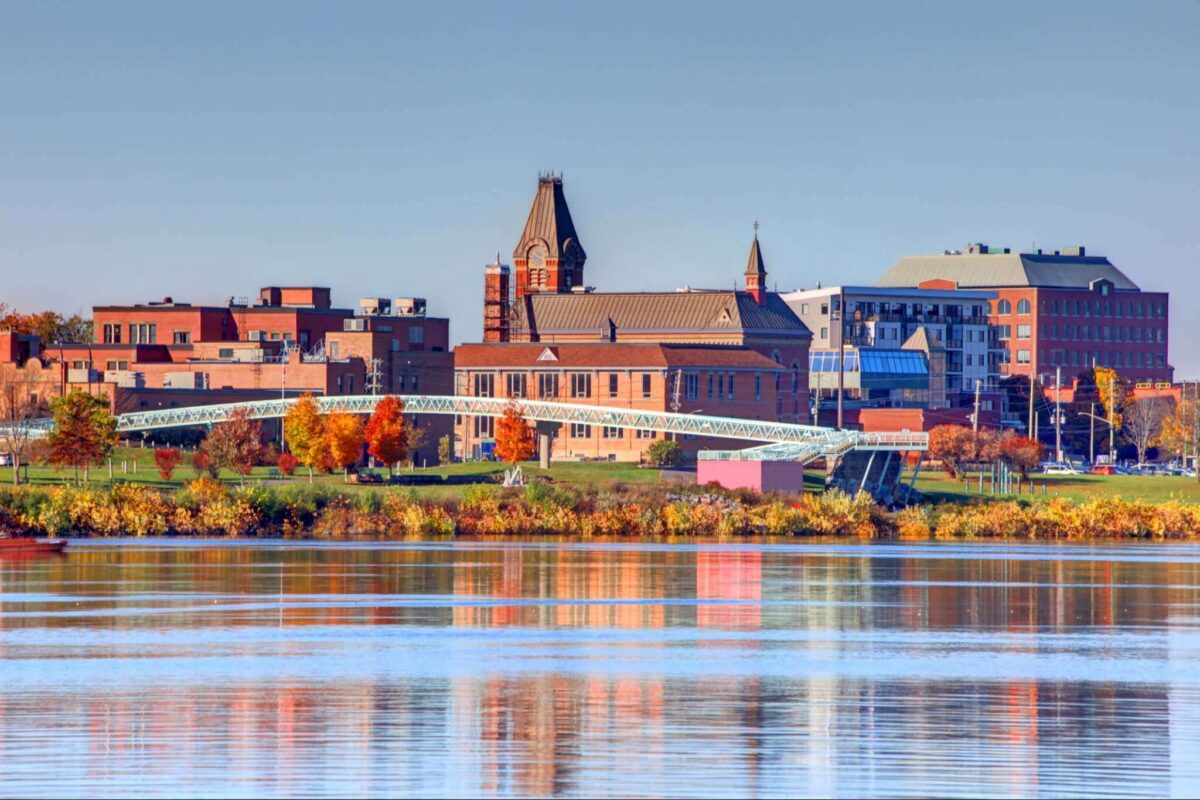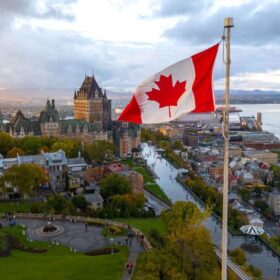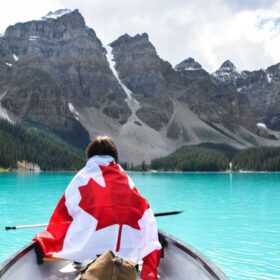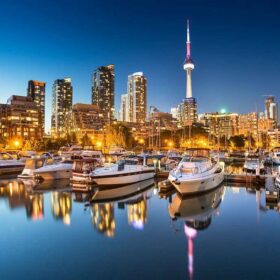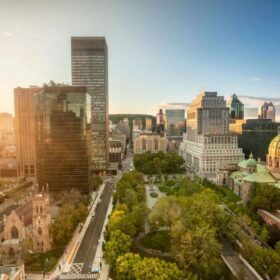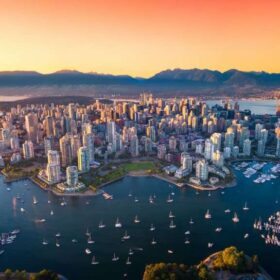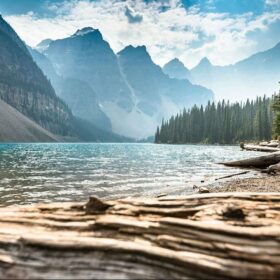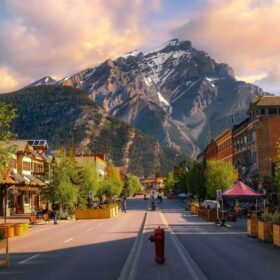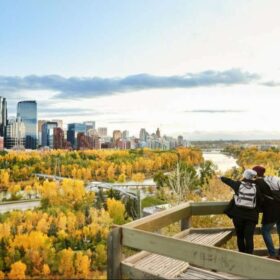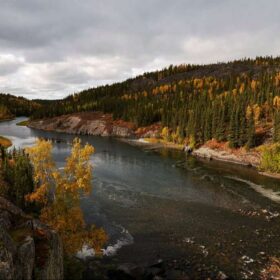New Brunswick has a wealth of natural wonders, from the world’s highest tides to exceptional whale-watching and some of the warmest saltwater swimming north of Virginia, making it a surprising destination for tourists. Bordering Québec, Nova Scotia, Prince Edward Island, and the US State of Maine, the province offers a diverse range of attractions and activities to suit all interests, budgets, and travel styles.
Outdoor enthusiasts can explore miles of hiking trails, campgrounds, and exciting sea kayaking waters. History lovers can immerse themselves in historic houses and entire museum villages, while the abundant natural wonders are sure to captivate everyone.
The largest cities in New Brunswick are Saint John, Moncton, and the provincial capital, Fredericton. With more than three-quarters of the province covered in forests, many top attractions are located near the coast. Fredericton, situated nearer the center alongside the St. John River, flows southeast through beautiful farmland to join the Bay of Fundy in Saint John. It’s important to note that the city’s name is Saint John, always spelled out in full; St. John’s is the city in Newfoundland.
Explore the diverse offerings of New Brunswick with this convenient list of the best things to do in the province.
1. Hopewell Rocks
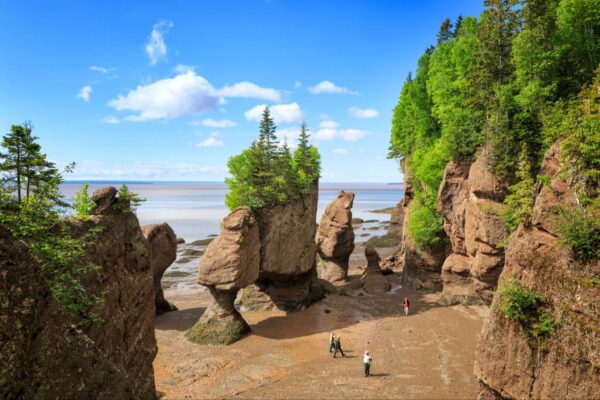
The appearance of the Hopewell Rocks undergoes a notable transformation with the changing tides. During high tide, they take on the semblance of tree-clad islands, visible from a network of platforms connected by stairs. As the tide recedes, these formations reveal themselves as colossal, intricately eroded sea stacks towering over a rocky beach. Visitors can descend the stairs to the ocean floor, walking among these impressive structures.
Park rangers are present to address inquiries and ensure the beach is evacuated before the incoming tide. Interpretive signs and displays at the visitor center elucidate the origin of these sculpted cliffs and pillars. To truly appreciate the rocks during high tide, participating in a guided kayak excursion with Baymount Outdoor Adventures offers an immersive experience.
2. Bay of Fundy and Fundy National Park
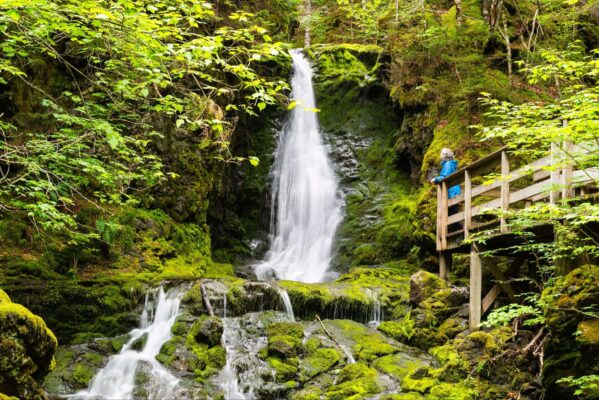
Numerous attractions that enhance the appeal of New Brunswick for tourists are closely linked to the Bay of Fundy and its tides. The highest tides globally, reaching depths of up to 19 meters (10 fathoms), occur twice daily in this funnel-shaped bay. Over the millennia, these surging waters have sculpted a coastline adorned with dramatic cliffs, sea caves, and extraordinary rock formations.
As the tides rise and fall daily, they give rise to natural phenomena such as Moncton’s tidal bore and Saint John’s renowned Reversing Falls. Lighthouses grace the points along the irregular shoreline, and charming fishing villages snugly lie in its coves. The powerful tides also bring a vast number of plankton and fish into the bay, creating prime feeding waters for whales as many as 12 species can be found here in the summer.
Fundy National Park, where the New Brunswick Forest meets the tides, is situated approximately midway between Moncton and Saint John. This stretch of undeveloped coastline allows visitors to enjoy wilderness year-round. Hiking trails lead along the coast and through the forests, while birders flock to the park in spring and autumn to witness migratory species feeding on the tidal mudflats.
During winter, one of the favored activities is skiing on the park’s 40 kilometers of trails groomed for cross-country skiing. Near Alma, a village within the park, three of the most beautiful waterfalls in New Brunswick—Dickson Falls, Laverty Falls, and the tallest, Third Vault Falls at 16 meters—captivate visitors. Park facilities include campgrounds, swimming, and a golf course.
3. Roosevelt Campobello International Park
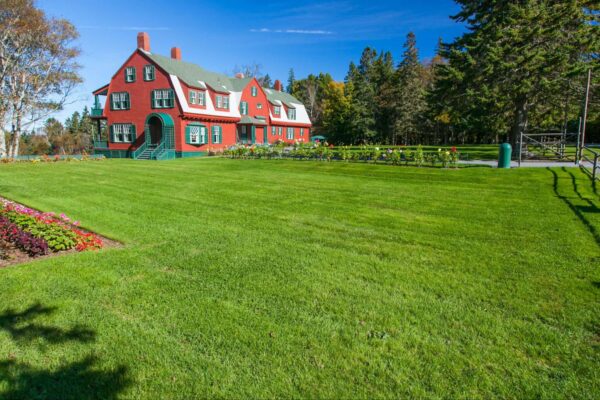
Campobello Island is accessible from mid-June through September via ferries from mainland New Brunswick to Deer Island and onward to Campobello. It is also accessible year-round by bridge from Lubec, Maine. Despite being part of Canada, the island maintains strong cross-border connections, highlighted by the historic Roosevelt summer estate, the focal point of Roosevelt Campobello International Park.
The centerpiece of the property is a 34-room cottage where the Roosevelts spent their summers with their children from 1905 to 1921. Franklin and his parents had been summering on Campobello since his childhood. Many of the furnishings are original to the family, and knowledgeable guides provide insights into the rooms and the Roosevelts’ experiences during their stays.
Visitors often note the servants’ rooms, situated alongside the family’s rooms on the second floor, which are spacious and well-furnished. Despite both Eleanor and Franklin having grown up in aristocratic families, they were adamant about this arrangement.
In addition to the Roosevelt Cottage, several other summer homes on the expansive grounds offer views of the bay. One of these homes hosts the “Eleanor’s Tea” program, where visitors can enjoy tea and cookies while staff members share lively and personal stories about the former First Lady and her various activities and initiatives.
Explore the park by picking up a guide to wildflowers and plants, taking a geological walking tour, embarking on a self-guided bog tour, or following trails through different ecosystems. Near the Roosevelt Park, Herring Cove Provincial Park provides camping, golf, hiking trails, and beaches. At the northern tip of the island stands East Quoddy Lighthouse.
4. Whale Watching
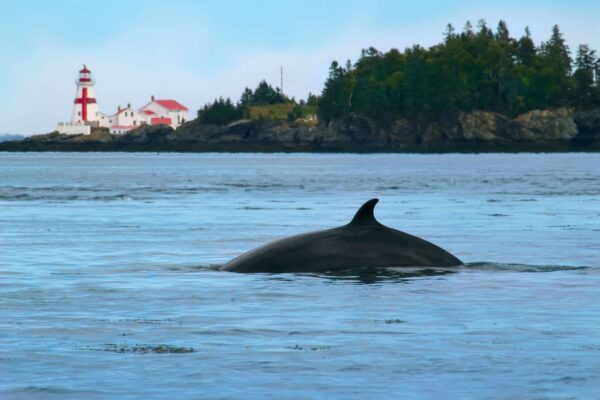
The Bay of Fundy lures up to 12 species of whales and other marine animals during the summer for calving and feeding on the abundant krill and fish brought in by the Fundy tides. Minke and Finback whales arrive in spring, along with Harbour Porpoises, followed by Humpback Whales and White-sided Dolphins in June.
As the season progresses, more species return, including the rare North Atlantic Right Whale. The season spans from June to October, with the highest concentration in August. The likelihood of witnessing not just one whale but multiple whales and other wildlife is very high. On the way to the best sighting waters, you’ll cruise past lighthouses and islands where sea birds’ nest.
Three different companies in St. Andrews – Island Quest Marine Whale and Wildlife Cruises, Fundy Tide Runners, and Jolly Breeze Tall Ship – offer a range of whale-watching experiences, from zodiacs to a fully rigged sailing ship. Jolly Breeze, with costumes and on-board activities, is especially popular with younger children. All are situated around the main dock off Water Street.
St. Andrews offers many more attractions: a replica of a blockhouse from the War of 1812, the Huntsman Marine Science Center, Kingsbrae Garden, and streets lined with historic homes, some of which were floated across the bay from Maine by Loyalists during the American Revolution.
Ministers Island Historic Site, accessible only at low tide by causeway, is a 50-room summer home that once belonged to visionary railway builder Sir William Van Horne, who also constructed the landmark St. Andrews hotel, The Algonquin.
5. The Fundy Trail Parkway
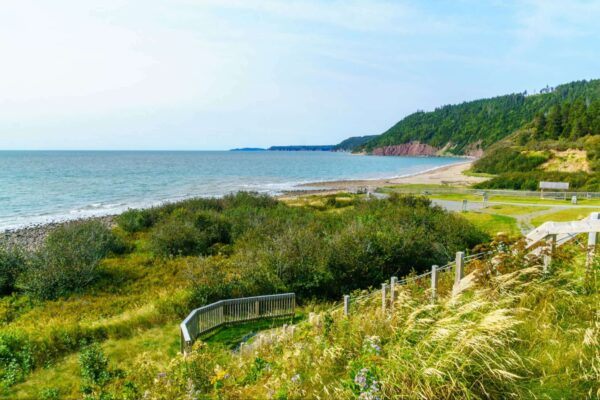
The Fundy Trail Parkway, a picturesque coastal route northeast of Saint John, begins near the once-thriving shipbuilding community of St. Martins and extends along the coast. Featuring a leisurely pace, the drive offers scenic lookouts and picnic areas with views of coastal cliffs, secluded beaches, marine wildlife, and Flowerpot Rock.
A 10-kilometer pedestrian and bicycle trail runs parallel to the drive, with some overlooks connecting to trails leading to isolated cobble-strewn coves. The interpretive center at Big Salmon River provides insights into the former logging community, showcasing old lumbering equipment at the Heritage Sawmill.
Kids will enjoy the nearby 84-meter (275-foot) suspension footbridge across Big Salmon River. A road also crosses the river, climbing the steep headland and continuing along clifftops to a long beach. On weekends, a shuttle service at the lookout parking areas returns walkers to their cars.
Access to the Fundy Trail Parkway is from the village of St. Martins, which boasts two covered bridges, sea caves, craft shops, and an outfitter for tours of the Fundy coast. St. Martins and the parkway make for an easily manageable day trip from Saint John.
6. Village Historique Acadien
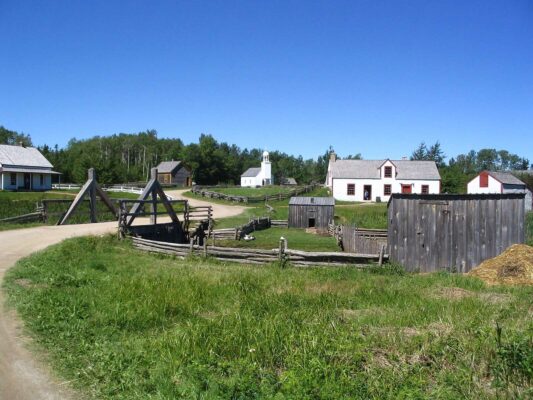
The museum village showcases the lives of a distinct group of New Brunswick’s settlers, the Acadians, who originated from France in the 1600s and 1700s. Their French-speaking descendants reside in northeastern New Brunswick, along the coast north of Moncton, and throughout the region known as the Acadian Peninsula.
Village Historique Acadien represents the period from 1780 to 1949 in the lives of Acadians, depicted through 40 preserved and replicated homes, shops, and workshops. Costumed interpreters illustrate household, farm, and craftsmen’s skills prevalent in villages during those eras. Visitors might chance upon a farmhouse kitchen, receiving tips on early 19th-century cooking or tasting fresh bread from the oven.
Throughout the village, residents engage in seasonal tasks like drying fish, carding and spinning wool, cutting hay, forging tools, and making horseshoes. The restaurant offers samples of Acadian dishes, and guests can even stay overnight in an authentic hotel replicating one that operated in 1907 in nearby Caraquet. Recognized for its seafood, particularly oysters (with an oyster museum in town), Caraquet serves as an excellent base for exploring the Acadian Peninsula and the picturesque Miscou Island.
7. Grand Manan Island
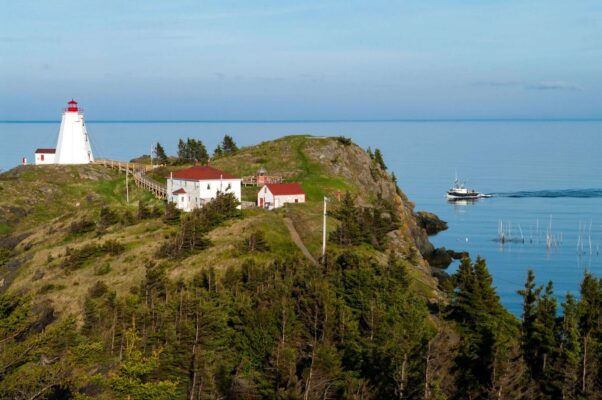
Only accessible by ferry from Blacks Harbour, the island of Grand Manan is a small fishing community near the mouth of the Bay of Fundy. A road runs along its 35-kilometer length, with a few side roads leading 10 kilometers to its steep western shore.
Birdwatchers visit to observe some of the 240-plus species present, including the Atlantic puffin, and the island serves as a popular hub for whale-watching and observing other marine creatures, such as the Atlantic white-sided dolphin, harbor porpoise, and four species of seals. Artists draw inspiration from its rugged cliffs, lighthouses, and fishing villages, and you’ll discover numerous studios and galleries on the island.
8. Irving Nature Park
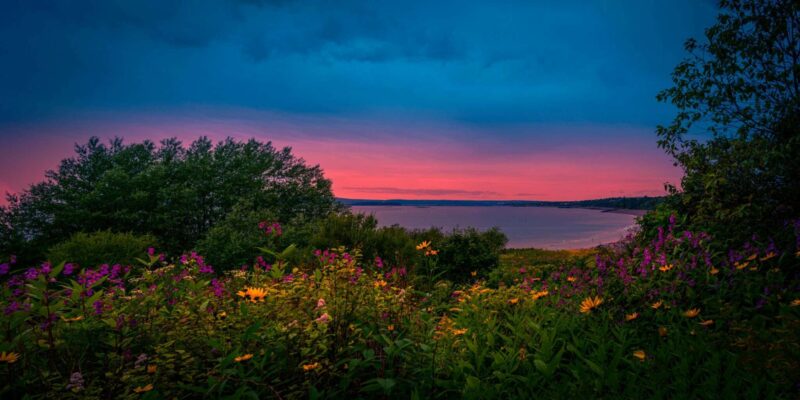
Just beyond the center of Saint John, the Irving Nature Park safeguards 600 acres of salt marsh, forests, mud flats, volcanic rock, and beach along 11 kilometers of shoreline. A boardwalk spanning the marsh provides an excellent vantage point for observing the more than 250 species of birds that either nest in the park or migrate through, and you can view harbor seals from a Seal Observation Deck.
Trails through the woods lead to viewpoints of the rocky shoreline, which undergoes constant changes with the rise and fall of the Fundy tides. There’s a designated area for children, featuring a playground and a maze of cedar hedges. The park, which is free to enter, provides picnic facilities equipped with barbecue grills.
9. Kingsbrae Garden
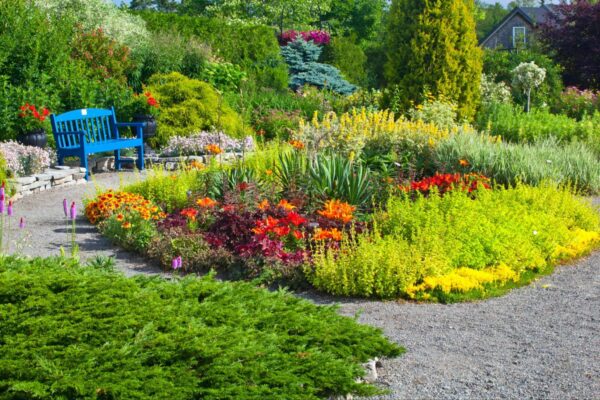
New Brunswick’s foremost botanical garden benefits from a climate moderated by the Bay of Fundy, enabling the cultivation of over 50,000 perennials across a series of themed gardens. While the floral displays are stunning, the garden imparts horticultural lessons on organic and sustainable practices, garden design, and the integration of gardens into their landscapes and ecosystems.
As you meander through the gardens, you will encounter a windmill, two intricately detailed historic playhouses, a cedar maze, peacocks, ponds, an apple orchard, woodland trails, a garden for the senses, a heather garden, and formal terraces. A dedicated section for children offers small playhouses, a climbable castle, rabbits, and an adjacent corral housing alpacas and goats.
Contemporary sculptures are strategically placed throughout the gardens, with a separate Sculpture Garden showcasing dozens more in settings tailored for each piece. A tearoom extends onto a terrace with a view of the manicured lawns.
10. Cape Enrage
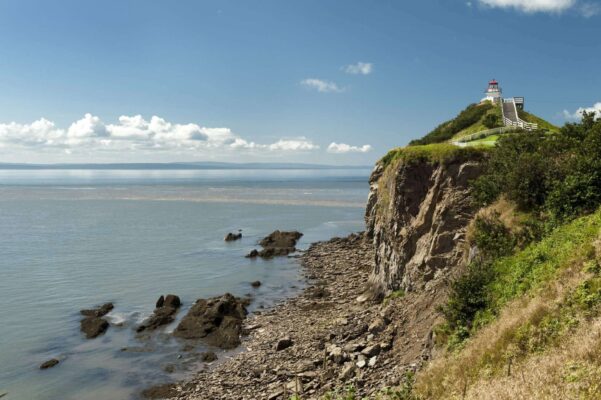
Perched on the rugged cliffs of Cape Enrage, a diminutive lighthouse dating back to 1838 offers a sweeping vista of the Bay of Fundy. While lighthouses are a common sight along the Atlantic Coast, Cape Enrage distinguishes itself with an outdoor activity center where enthusiasts can receive instruction in rappelling, ziplining, rock climbing, and kayaking.
During a stroll along Barn Marsh Island Beach, accessible only at low tide, visitors can observe fossils that have dislodged from the 40-meter cliffs stretching four kilometers behind the beach. Encased in layers of sedimentary rock eroding from the cliff, these fossils date back approximately 320 million years.
11. Magnetic Hill

Moncton’s Magnetic Hill is among the most distinctive tourist attractions in New Brunswick. This natural wonder creates the illusion that your vehicle is rolling uphill when, in reality, it is an optical illusion. Nevertheless, the experience is genuinely captivating as it feels like your vehicle is defying gravity!
In the vicinity of Magnetic Hill, there are numerous activities to explore, making it a popular destination. Nearby attractions include a vineyard, waterpark, casino, and golf course, providing visitors with a variety of entertainment options.
Read More: Best Places to Visit in Canada
FAQs
Q: What is the best time to visit New Brunswick?
A: The summer months, from June to August, offer pleasant weather for outdoor activities and cultural events.
Q: Are there any entry fees for the national parks in New Brunswick?
A: Yes, some national parks may have entry fees. It’s advisable to check the official website for specific details.
Q: Can I explore New Brunswick on a budget?
A: Yes, there are budget-friendly accommodation options and many free or low-cost activities to enjoy.
Q: Are there guided tours available for exploring historical sites?
A: Yes, many historical sites offer guided tours to provide in-depth insights into the region’s rich history.
Q: What is the transportation like in New Brunswick?
A: New Brunswick has a well-connected road network, and renting a car is a convenient option for exploring the province.

